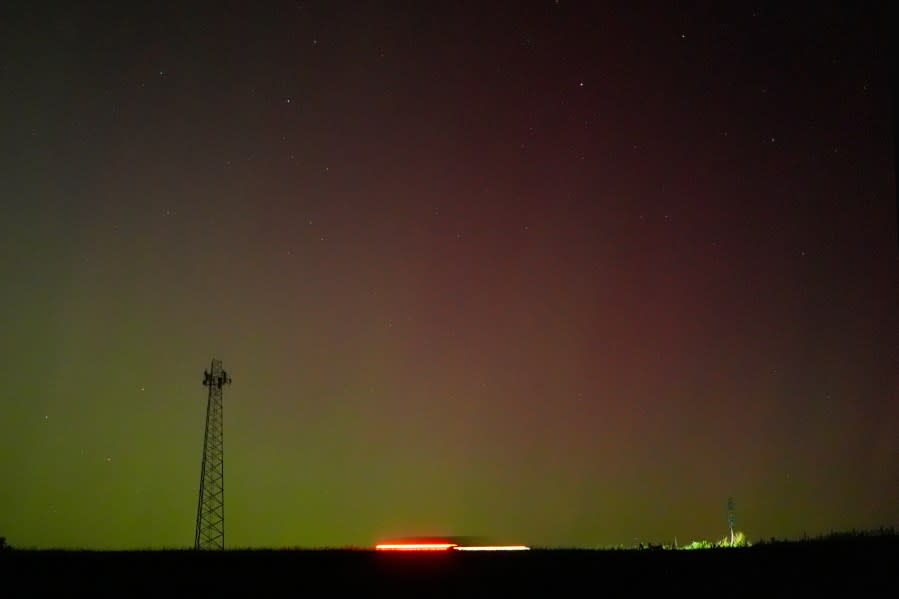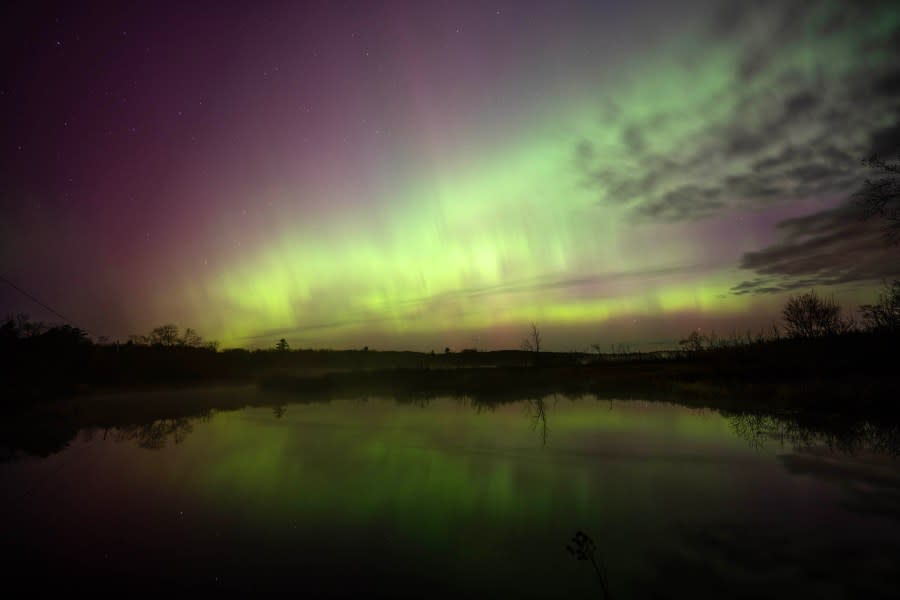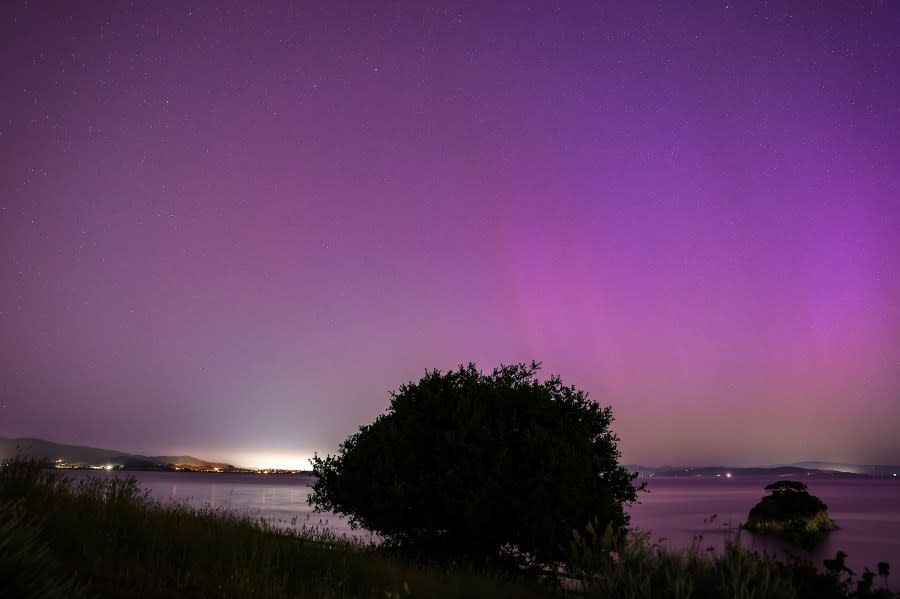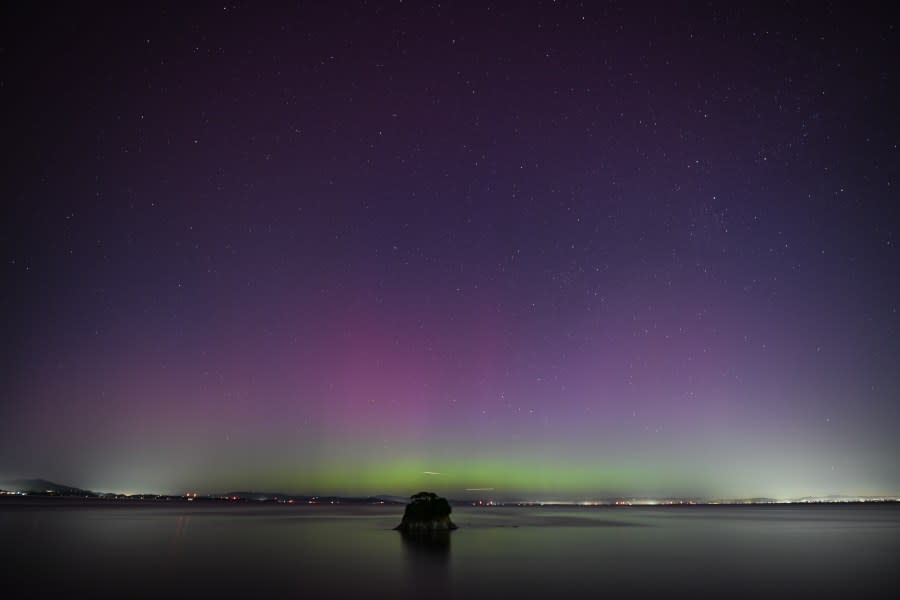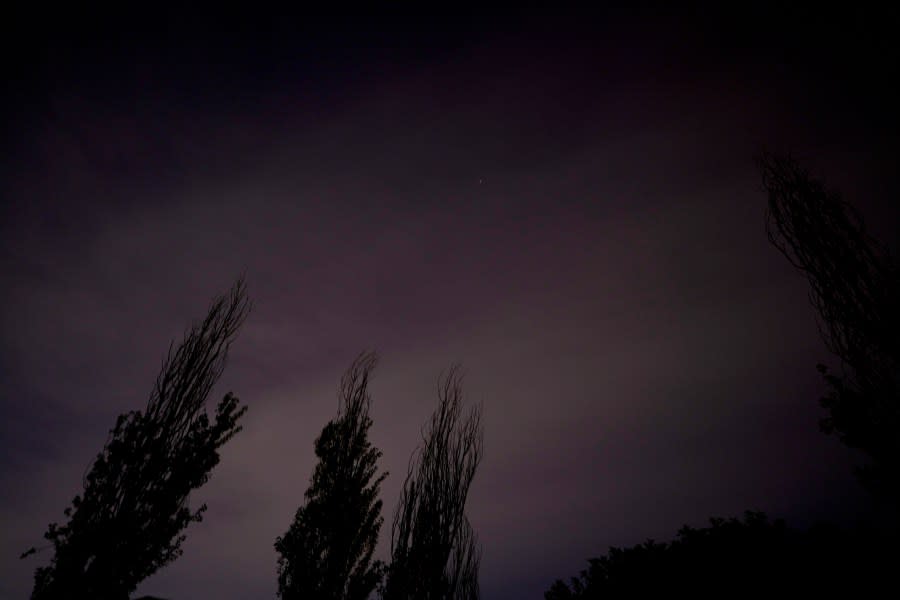Northern lights: Will you get to see them again this summer?

(NEXSTAR) — Skywatchers nationwide have had the chance to see stunning celestial shows already this year, from the total solar eclipse, the return of the “devil comet,” and multiple nights colored by the northern lights. There’s also a chance we’ll see a “once-in-a-lifetime” explosive event bring a “new” star to the night sky for the first time in roughly 80 years.
There’s still a good chance we’ll see one of those galactic gems — the northern lights — again this summer.
Back in May, we saw solar storms strong enough to bring the northern lights as far south as Florida and Hawaii, areas that rarely see the aurora.
A communications tower is silhouetted against the northern lights Saturday, May 11, 2024, near St. Joseph, Mo. (AP Photo/Charlie Riedel) MOUNT MITCHELL, UNITED STATES – MAY 10: Unusual sun activity created a G5 Geostorm on Earth sparks northern lights (Aurora Borealis) in Mount Mitchell, North Carolina, United States on May 10, 2024. (Photo by Peter Zay/Anadolu via Getty Images) SMITHFIELD, MAINE – MAY 11, 2024: The northern lights dance in the sky as it reflects in the still water of North Pond in Smithfield, Maine on May 11, 2024. The aurora borealis, commonly referred to as the northern lights, are electrically charged particles that are interacting with gases in outer space. This recent display was the strongest seen since 2003 rating a G5 on the geomagnetic scale. (Photo by Michael Seamans/Getty Images) CALIFORNIA, USA – MAY 11: Northern Lights (Aurora Borealis) illuminate the sky of San Francisco North Bay as seen from China Camp Beach in San Rafael, California, United States on May 11, 2024. (Photo by Tayfun Coskun/Anadolu via Getty Images) CALIFORNIA, USA – MAY 11: Northern Lights (Aurora Borealis) illuminate the sky of San Francisco North Bay as seen from China Camp Beach in San Rafael, California, United States on May 11, 2024. (Photo by Tayfun Coskun/Anadolu via Getty Images) The Aurora Borealis or the northern lights are seen from Arlington, Texas, Friday, May 10, 2024. (AP Photo/Julio Cortez)
While much of the U.S. has not seen the northern lights recently, that could soon change.
What causes the northern lights?
It’s solar storms — specifically solar flares and coronal mass ejections, or CMEs — that cause the northern lights. CMEs are, essentially, explosions of plasma and magnetic material being hurled from the sun and into space.
If that material travels in just the right direction, it can collide with Earth’s magnetic field, sending particles flowing toward the North and South Poles. Those particles will interact with the gasses in our atmosphere, creating excess energy that becomes bursts of light, better known to us as the aurora.
‘Once-in-a-lifetime’ explosive event in space expected soon: What to know
How far south the northern lights travel in the U.S. is due to the strength of the geomagnetic storms — the stronger they are, the further south the aurora can appear.
Why have the northern lights been so active recently?
The recent bouts of auroral activity we’ve seen are largely due to where we are in Solar Cycle 25. During solar cycles, the sun flips its poles. As it reaches the peak of the cycle, the sun also becomes far more active.
Earlier this year, the largest solar flare in years was detected, and even more have been reported since. That includes an M9.3 flare detected on June 23 in the same region that has produced six X-class flares (flares are ranked among four classes, starting at B, then C, M, and finally, X). Unfortunately, the flare was not forecasted to bring the aurora to the U.S.
The best part? It doesn’t seem that we’ve reached the peak of Solar Cycle 25.
We may not reach solar maximum for a few months yet, according to Mark Miesch, a researcher with NOAA’s Space Weather Prediction Center, tells Nexstar. At least, if you consider solar maximum when we see the maximum number of sunspots or the maximum energy flux of certain radio waves.
Northern lights: What causes the colors that we see — and don’t see?
Miesch, however, views solar maximum “as a period of enhanced activity.”
“Like space weather’s version of hurricane season,” he explained. “By this definition, solar maximum can last about 2 years or more. And, if you define solar maximum this way, then I would say that we are already in solar maximum and that it is likely to continue through the end of 2024 and into 2025.”
Will we see more northern lights soon?
According to Miesch, more strong solar storms are expected through the rest of this year, throughout 2025, and potentially even into 2026.
While the SWPC and scientists around the world do keep an eye on the sun and try to predict what activity, if any, will ultimately impact us, it can be difficult to tell exactly when CMEs will hit Earth. Once CMEs are within 1 million miles of our planet, it becomes easier, but the lead time drops to about 15 to 45 minutes.
If the current predictions are correct, and solar maximum activity continues for the coming months, at least some Americans will have the chance to see the northern lights again soon. As for whether they’ll reach Florida and Hawaii again, you’ll have to stay tuned.
Copyright 2024 Nexstar Media, Inc. All rights reserved. This material may not be published, broadcast, rewritten, or redistributed.
For the latest news, weather, sports, and streaming video, head to The Hill.

